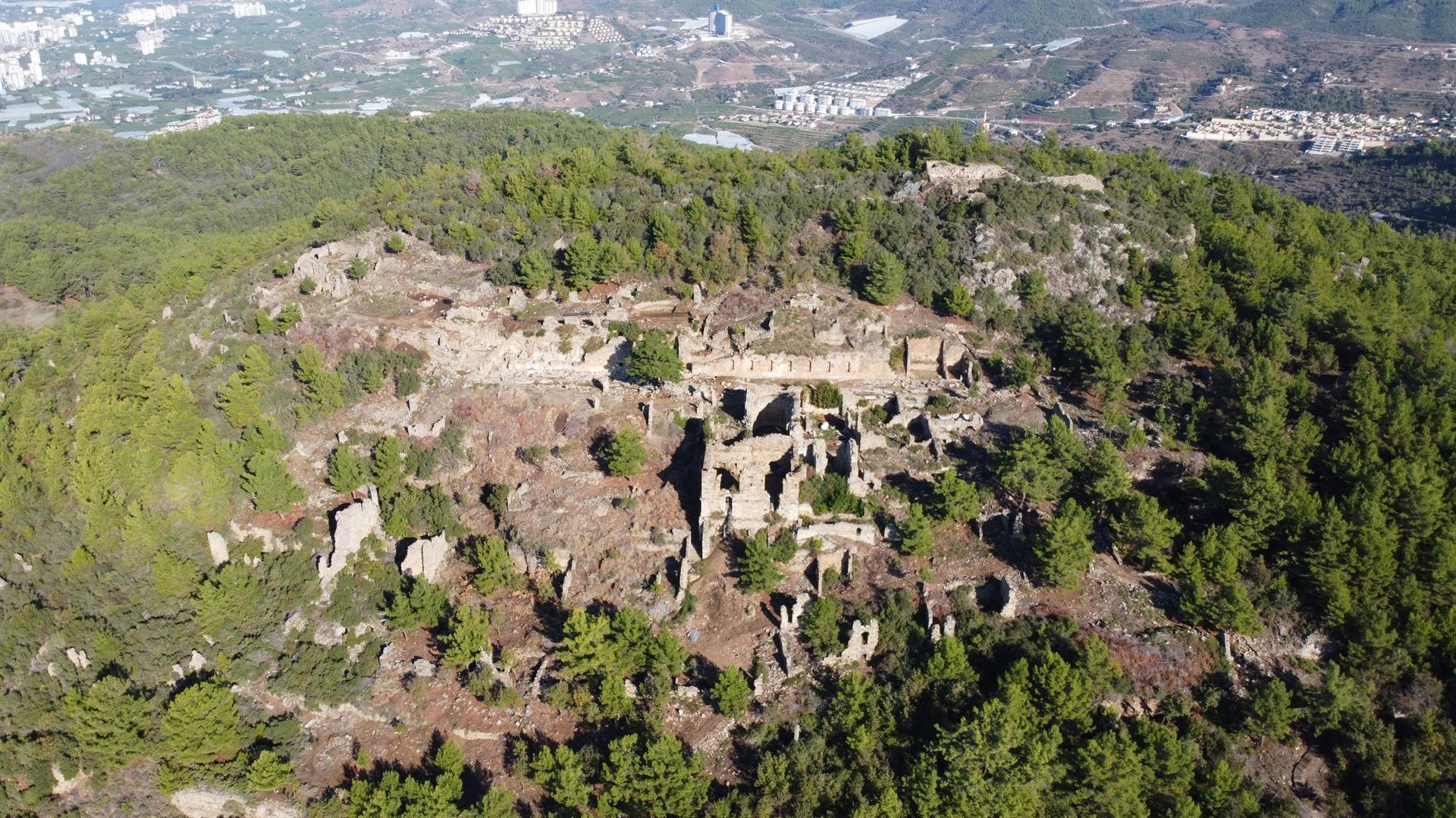
Artifacts belonging to the Hellenistic, Roman, Byzantine and Anatolian Seljuks period have come to light during the ongoing excavation works in the ancient city of Syedra, which lies in the southern province of Antalya’s Alanya district.
Located in Seki neighborhood, the ancient city of Syedra is believed to date back to the ninth century, considering the artifacts unearthed in this year’s works.
The ancient city draws attention with its Kaynak Cave, infrastructure for clean water supply, Colonnaded Street, Baptism Cave, pools and cisterns.
Carrying the traces of Hellenistic, Roman, Byzantine and Anatolian Seljuks into the future, Syedra is open to visitors free of charge.
Speaking to the state-run Anadolu Agency, Ertuğ Ergürer, associate professor at Karamanoğlu Mehmetbey University and the head of the excavations, said that Syedra was one of the most important cities in the Cilicia region.
Stating that the first excavations in the city were carried out in the form of salvage excavations between 1994 and 1999, Ergürer said the Colonnaded Street, which was considered to be the heart of Syedra, was also unearthed during this period.
He stated that during the new term of excavations carried out in the city center in 2019, they mostly worked on different buildings in the ancient city. “Here, we saw the architectural elements of other cities of the ancient period, too. The terrain here is difficult, and their placement of these architectural elements on this difficult terrain shows the city’s distinction.”

“The altitude suddenly rises 400 meters from the sea. They processed natural rocks and placed the structures like that. Architecturally, it differs from other cities,” he added.
Noting that the city gives an impression that the Roman and Byzantine architecture was predominant here, Ergürer said that they also found ceramic pieces belonging to the Anatolian Seljuks in recent excavations.
Infrastructure to be one of the important systems in the city
Stating that with the findings obtained in previous excavations, it took them back to the third century B.C., Ergürer said, “During the works this year, we found ceramics in a region that date back to the ninth century B.C., which we call the Iron Age.”
Noting that most of the buildings in the ancient city have been preserved to this day, he said, “The people living here both adapted the geological structure to the architecture and made use of their systems by adapting the architecture to the geological structure.”
Stating that one of the important assets of the city is its infrastructure, he said, “One of the features we see in the city is that the water system. In other words, a network was prepared before the large buildings in the city were built. They connected channels to cisterns. We can see this, especially in the bath area.”
He also noted that the people at that time used the natural water resources of the city very well and stored the water. “There is a place called Baptism Cave. It is a religious place built inside a cave. It is the only example in the region with its baptismal pool and frescoes on the walls.”

Pointing out that they have not yet solved the functions of some of the buildings in the city, Ergürer said that excavations focused on the bath area, which is the best-preserved structure in the city.
Ergürer also noted the carving on coins and inscriptions found in the ancient city that depicted the region’s sports complex of wrestlers.
“The Colonnaded Street, which has a magnificent architecture, is the center of Syedra. This area, where granite columns rise, is covered with a roof, and large shops lie behind it,” he said, adding that numerous workshops identified in the city show that olive oil and wine work was actively done here.
“We know that large double-handled vessels called ‘amphora’ produced in ceramic workshops were exported to different cities. Apart from that, it was understood from the inscriptions found on the Colonnaded Street that the city had a council,” he added.
Underlining that earlier it was concluded that the parliament building was below the city, he said, “However, during the recent works, we found that the parliament building was on a terrace on the Colonnaded Street.”